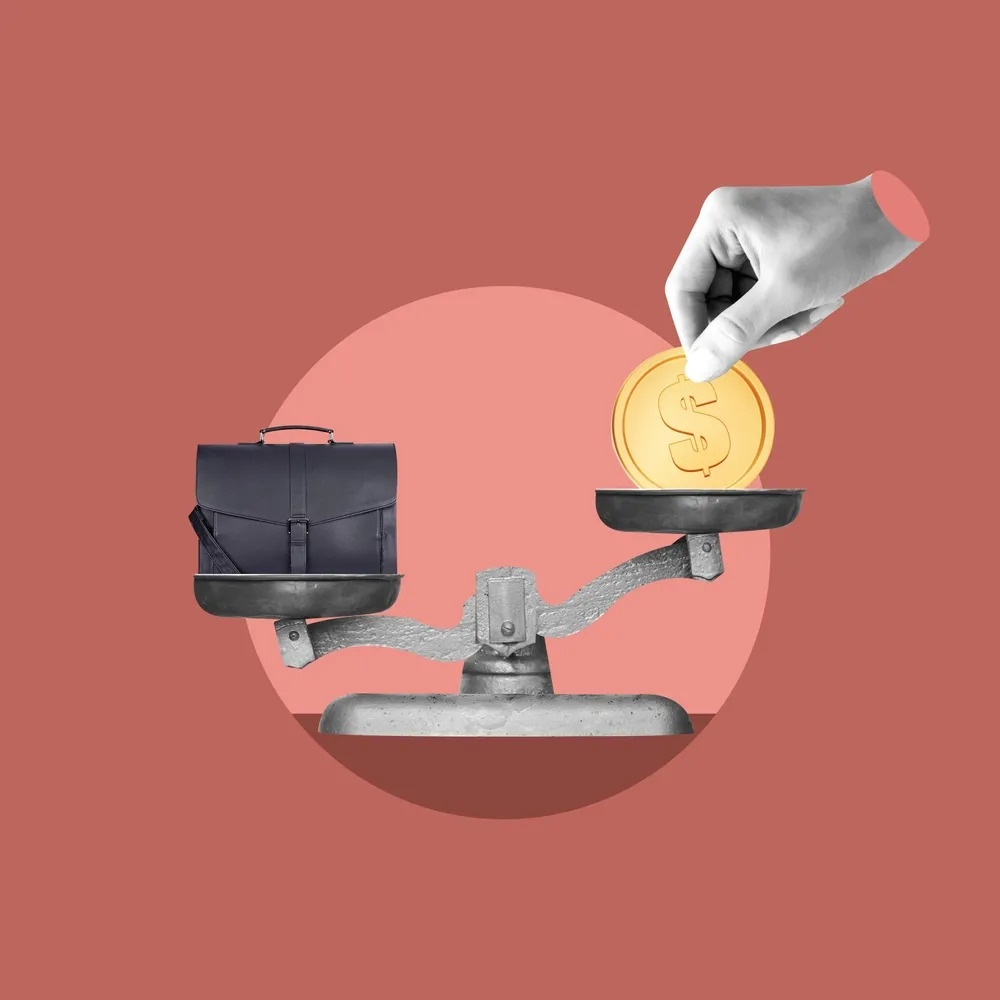In a world overflowing with material goods, it’s easy for our homes to become cluttered with things we no longer use or need. But did you know that decluttering can not only bring a sense of order and calm to your living space but also put some extra cash in your pocket? By identifying and selling items you no longer need, you can make thousands while simultaneously simplifying your life. Let’s dive into some practical and effective ways to turn your unwanted items into money.
1. Explore the World of Online Marketplaces

The internet has revolutionized how we buy and sell items, and online marketplaces are a fantastic starting point for decluttering your home. Platforms like eBay, Facebook Marketplace, and Craigslist offer a great way to reach a wide audience without leaving your house. According to a recent study published by Business Insider, eBay alone has over 182 million active users globally, which means your unwanted items could very well be someone else’s treasure. Begin by taking clear, concise photos of your items and writing detailed descriptions to catch potential buyers’ eyes.
It’s important to price your items realistically. Check out similar listings to gauge how much others are selling identical items for. Be prepared to negotiate, as many buyers will try to haggle. The key to success on these platforms is being responsive and courteous to inquiries. This not only helps you sell your items but can also lead to positive reviews, making future sales even easier.
2. Host a Garage Sale for a Community Experience

If you prefer a more traditional approach, hosting a garage sale can be both profitable and enjoyable. It’s an excellent way to get rid of a lot of stuff in one go while meeting neighbors and community members. According to the National Association of Realtors, garage sales are a popular option for decluttering, with potential earnings of up to $400 in a single weekend. Start by picking a weekend with good weather and advertising your sale on community boards, social media, and through flyers.
Organize your items logically, perhaps grouping similar items together to make it easier for buyers to browse. Pricing is crucial here as well; keep it simple and consider using color-coded stickers to indicate different price ranges. Be prepared to negotiate and have plenty of change available for cash transactions. Not only will you declutter your home, but you’ll also enjoy some fresh air and friendly conversations.
3. Turn to Consignment Shops for Hassle-Free Selling

If running a garage sale or managing online listings sounds daunting, consignment shops offer a convenient alternative. These shops sell your items on your behalf, often taking a percentage of the sale price. This option is excellent for higher-value or brand-name items, as consignment stores often attract buyers looking for quality at a reduced price. As Forbes consignment expert Marcia Layton Turner points out, the consignment market is booming thanks to its sustainable nature.
Before you choose a consignment shop, research and select one that specializes in the types of items you’re selling. Some may focus on clothing, while others might lean toward furniture or home décor. Ensure your items are in good condition, as most shops will only accept gently used or like-new products. Once you’ve dropped off your items, you can sit back and wait for the check to arrive, making this a no-fuss option for busy individuals.
4. Get Crafty with Upcycling Projects

Before you toss out that old piece of furniture or those random bits and bobs, consider their potential for upcycling. Upcycling involves creatively transforming an item into something new and functional, often with minimal cost and effort. It’s a fantastic way to breathe new life into tired objects while also keeping them out of landfills. For example, an old ladder can become a unique bookshelf, or a collection of mismatched chairs can be painted and reupholstered for a fresh look.
Once you’ve completed your upcycling projects, you can either keep them as personalized home décor or sell them at a premium. Handmade, unique items often attract attention on platforms like Etsy, where consumers are willing to pay for creativity. The beauty of upcycling is that it taps into current trends of sustainability and personal expression. Plus, it’s a fun and rewarding hobby that could turn into a lucrative side hustle if you discover a knack for it.
5. Capitalize on Seasonal Trends for Maximum Profit

Timing can be everything when it comes to selling your unwanted items. Pay attention to seasonal trends that might increase the demand for specific goods. For example, winter clothing and sports equipment sell better as the colder months approach, while gardening tools and outdoor furniture are in demand in the spring and summer. By aligning your sales with these natural cycles, you can command better prices and move items more quickly.
To capitalize on seasonal trends, organize your items and plan your sales strategy around these periods. This may mean holding onto certain items until the right season comes around, but the payoff can be worth the wait. Additionally, keep up with popular consumer trends and adjust your listings accordingly. This strategic approach not only maximizes your profits but also helps clear out space at the times when you need it most.
6. Take Advantage of Specialty Buyback Programs

Many companies offer buyback programs for specific types of items, especially electronics, books, and even some types of furniture. These programs are designed to encourage recycling and sustainability while providing you with an easy way to make some cash. For instance, Apple has a trade-in program that offers gift cards for eligible devices, allowing you to upgrade or simply declutter responsibly. Even retailers like IKEA have buyback and resell services for gently used furniture.
Research which buyback programs might apply to your items and understand their terms and conditions. These programs often have specific criteria that your items must meet, such as being in working condition or having all necessary parts. While you might not receive the highest price as compared to selling directly to a consumer, the convenience factor can be significant. This option is perfect for those who prefer hassle-free transactions and have items that fit into these specialized categories.
7. Organize a Swap Party for a Fun Exchange

For a fun and social way to declutter, consider organizing a swap party with friends, family, or neighbors. This event allows participants to bring items they no longer need and exchange them for items others have brought. It’s an economical way to refresh your belongings without spending any money, and it’s also a great opportunity to catch up with loved ones. You can swap anything from clothes and accessories to books and small household items.
To organize a successful swap party, set clear rules, such as the number of items each person can bring and the condition they should be in. Ensure there’s enough space to display the items and consider providing refreshments to create a welcoming atmosphere. Not only does this create a fun, communal event, but it also allows everyone to walk away with something new without spending a dime. Plus, anything left over can be donated to local charities, making it a win-win situation for everyone involved.
8. Donate for a Tax Deduction

If you’re not interested in selling your items, donating them to a charitable organization is a noble alternative that can also offer financial benefits. Many donations are tax-deductible, which can be a boon when tax season rolls around. Organizations like Goodwill, Salvation Army, and local shelters are often in need of gently used clothing, furniture, and household items. Make sure to request a receipt for your donations, which you will need to claim your deduction.
Donating also brings the satisfaction of knowing that your items are helping those in need. This is especially meaningful when donating items like clothing and furniture, which can directly impact someone’s quality of life. In addition to tax deductions, some organizations may offer store credit or other forms of recognition for your generosity. This option not only aids others but also helps you feel good about decluttering.
9. Rent Out Items for Recurring Income

Instead of selling, consider renting out certain items you don’t use regularly. This can be particularly profitable with things like camera equipment, power tools, or sporting gear. Websites like Fat Llama and Loanables allow you to list your items for rent, reaching people who only need them temporarily. Renting can provide a steady stream of income while allowing you to retain ownership of your items.
When renting out, ensure your items are in good condition and create clear agreements with renters regarding usage and return conditions. Set a reasonable price that reflects both the item’s value and the rental duration. Offering flexibility in pick-up and drop-off arrangements can also attract more renters. This approach allows you to make money repeatedly from the same item, maximizing its value over time.
10. Utilize Community Bulletin Boards for Local Sales

If you prefer to stay local, community bulletin boards and local online groups can be excellent avenues for selling your items. Platforms like Nextdoor or local Facebook groups connect you with people in your area, reducing shipping issues and allowing for in-person exchanges. Posting on these boards is often free and can quickly reach hundreds of community members who might be interested in your items.
When creating your listings, include clear photos and descriptions to attract potential buyers. Highlight the benefits of buying locally, such as avoiding shipping costs or immediate pickup. Be sure to adhere to any community guidelines and be responsive to inquiries to maintain a positive reputation. Selling locally not only helps you declutter but also strengthens community ties.
11. Transform Collections into Cash

Many of us have collections gathering dust, whether it’s vintage toys, coins, or comic books. These items can be highly sought after by collectors willing to pay a premium for the right piece. The key is to research and understand the value of your collections before listing them for sale. Websites like eBay or specialized collector sites can offer insights into current market prices.
Once you have an idea of their worth, decide whether to sell individual pieces or as a complete set. Complete sets often fetch higher prices, but breaking them up can attract more buyers looking for specific items. Consider selling through auction houses or online platforms that cater to collectors for better exposure. This approach can turn your passion for collecting into a profitable venture.
12. Create Bundles for Greater Appeal

Sometimes, the best way to sell items is by bundling them together, which can be more appealing to buyers looking for a deal. For example, you can create kitchen sets, book series, or outfit bundles that offer more value than selling items individually. This strategy not only helps you move items quickly but can also increase the total sales price.
When creating bundles, ensure that the items complement each other and are priced attractively. Highlight the benefits of buying the bundle, such as cost savings or convenience. Bundling is especially effective when you have many small or low-value items that are challenging to sell individually. This tactic can be a win-win for both you and the buyer, making it easier to declutter efficiently.
13. Use Social Media to Reach a Larger Audience

Social media platforms like Instagram, Facebook, and even TikTok can be powerful tools for selling your items. By leveraging your network, you can reach a larger audience and potentially sell items faster. Create eye-catching posts with high-quality photos and engaging captions to capture attention. Use hashtags and participate in relevant groups to broaden your reach and increase visibility.
Consider hosting live sales or Instagram Stories to interact directly with potential buyers and answer questions in real-time. This approach not only helps sell items but also builds a community of followers interested in future sales. Always maintain transparency and good communication to build trust and a positive reputation. Social media can transform your decluttering process into a vibrant marketplace with endless possibilities.
This article is for informational purposes only and should not be construed as financial advice. Consult a financial professional before making investment or other financial decisions. The author and publisher make no warranties of any kind.








